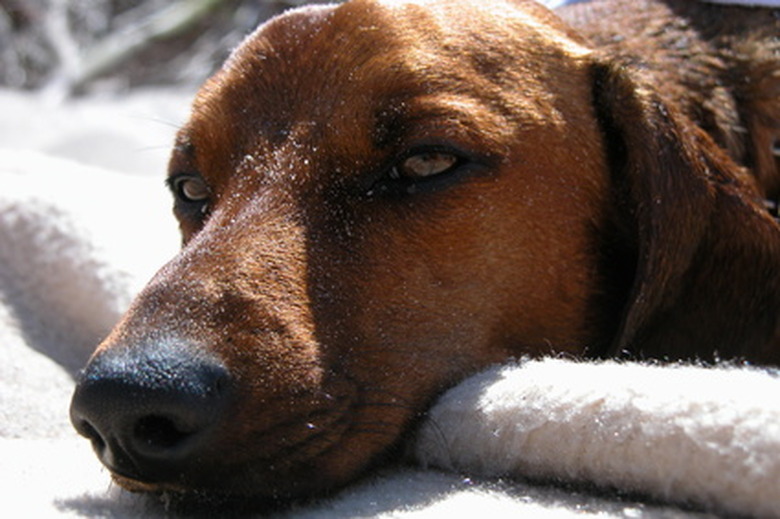The Anatomy Of A Dog Brain
The dog brain structure and function are similar to the human brain, and it experiences the same hormonal changes that affect our emotions. The differences between them exist primarily on a microscopic level, and the notable size differences in certain areas of the brain, particularly the cerebral cortex, impact the brain's abilities.
Dog intelligence and emotions
Dog intelligence and emotions
A dog has a brain about the size of a tangerine and intelligence that's equal to a human child at the age of 2 to 2.5. On average, dogs can learn up to 165 words and can surpass a 3- or 4-year-old child in math. While they experience a wide range of emotions, such as excitement, joy, fear, pain, and anger, they lack the experience of more complex emotions, like guilt. That look on your dog's face when you catch him eating out of the garbage is more likely related to fear of the consequences he has to face rather than actually feeling guilty.
Dog brain structure and function
Dog brain structure and function
The brain stem mediates messages between the brain and the rest of the body. It controls the unconscious body functions necessary for life, such as heart rate, blood pressure, respiratory rate, and consciousness. The cerebellum handles motor function and controls voluntary movements, such as balance, posture, coordination, and speech.
If you look at a dog brain diagram, you'll see that the cerebrum, also known as the cerebral cortex, is the largest part of the brain. It can be divided into the left and right cerebral hemispheres and comprises four lobes: the frontal lobe, occipital lobe, temporal lobe, and parietal lobe.
Both the frontal and temporal lobes have a role in alertness, intelligence, memory, and temperament. The thalamus is located here, and it controls sensory information, such as touch, pain, hearing, and sight. That information is then sent to the occipital and parietal lobes for information processing before being sent to the frontal lobe for planning and action.
Hormones and emotion regulation
Hormones and emotion regulation
Below the thalamus is the hypothalamus, which controls hormone production from the pituitary gland. It regulates eating and drinking patterns as well as temperature, reproduction, and the involuntary movements of the autonomic nervous system, including the heart, blood, blood vessels, and intestines.
Located inside the cerebrum, the limbic system regulates feelings such as rage and aggression, which are inhibited by the hippocampus and frontal lobe. It also regulates fear, anxiety, joy, and euphoria. It contains the amygdala, which is responsible for survival and defense. When a dog is faced with a threat, instead of taking the time to process it in the cerebral cortex, the thalamus sends this information directly to the amygdala for a quick defense response.
Dog brain vs. human brain
Dog brain vs. human brain
While the human brain and dog brain parts and functions are similar, the greatest differences between them are their size and how they operate on a microscopic level. In general, larger animals have larger brains. Based on the brain-to-body size, a human's brain is very large, while a dog's brain is only a bit larger than the average mammal's, which means it still has far more brainpower than most other animals.
The cerebellum is covered in folds, which increase the brain's surface area to allow for better cognitive function in a small space. A human brain has more folds on the surface than a dog and therefore more neurons and better cognitive function.
There's one part of the brain, the olfactory bulb, that is notably larger in dogs, and it's responsible for processing smells. This isn't surprising since dogs have a much better sense of smell than humans. For a dog, it accounts for 2 percent of the total weight of the brain. In contrast, a human's olfactory system accounts for only 0.03 percent of the brain.
